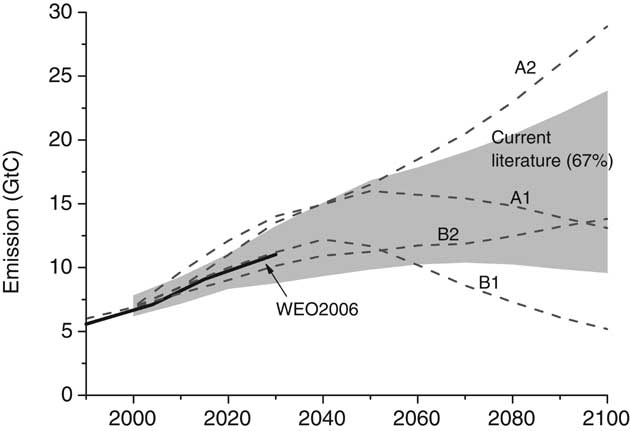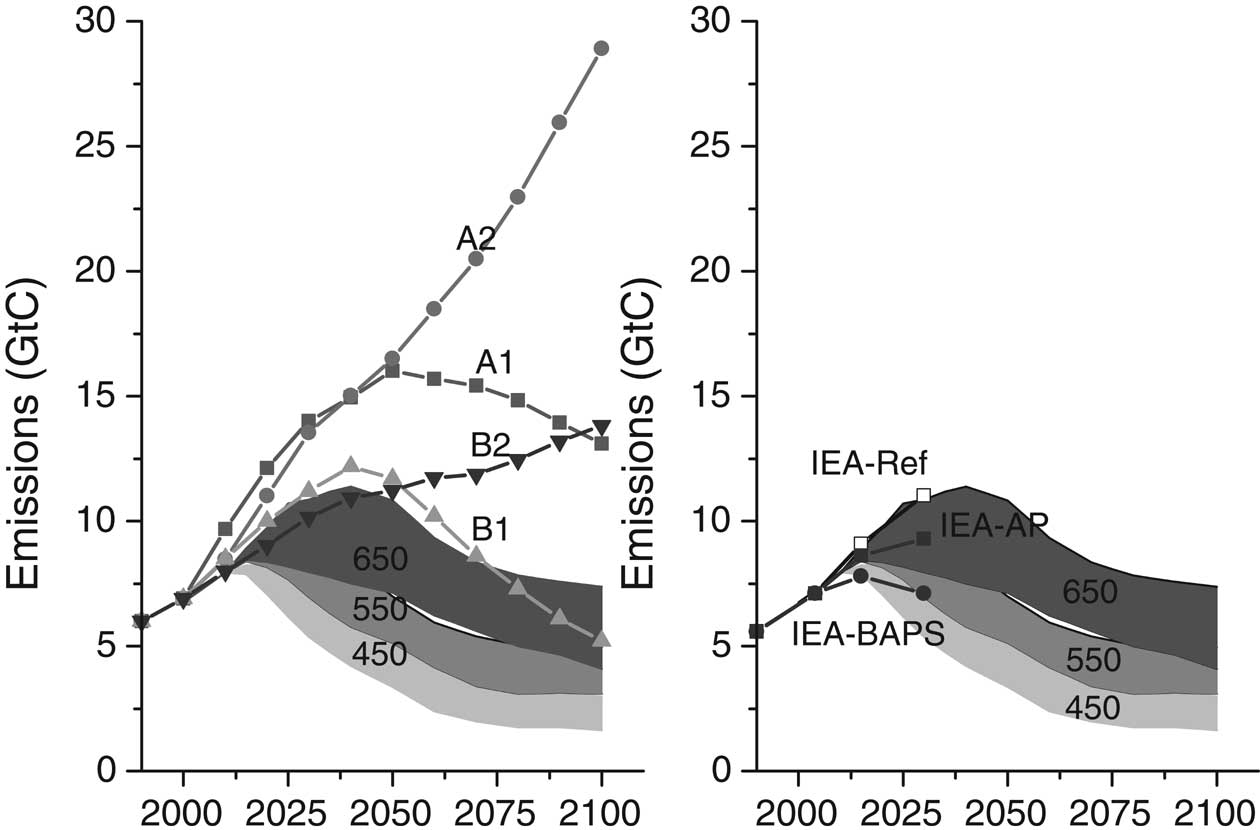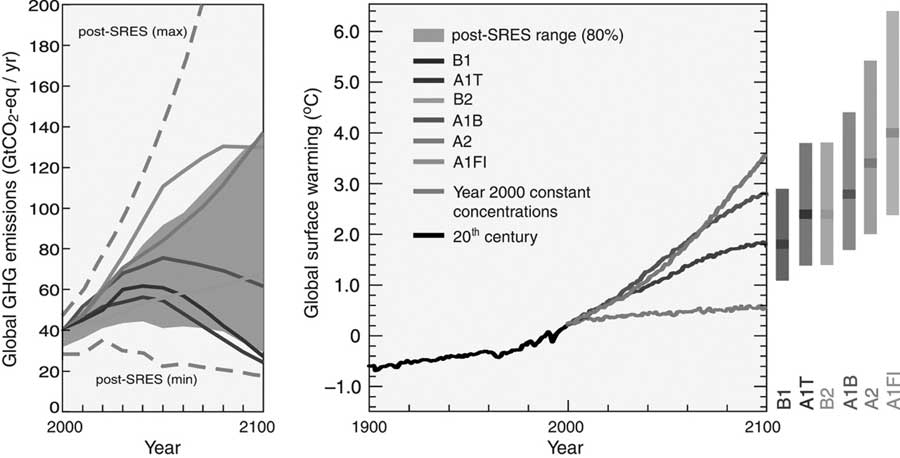
Figure 4-21. Comparison of current CO emission scenarios (scenarios since IPCC's Third Assessment Report 2001; mean + std. deviation), IPCC-SRES (A1, A2, B1, B2) and WEO2006.
sulfur emissions. The latter are currently having a cooling effect on the atmosphere. Whereas the computation of global mean temperature is uncertain, the patterns of local temperature change are even more uncertain (Figure 4-24) (IPCC, 2007a).
For precipitation, climate models can currently provide insight into overall global and regional trends but cannot provide accurate estimates of future precipitation patterns in situations where the landscape plays an important role (e.g., mountainous or hilly areas). A typical result of climate

Figure 4-22. Comparison of emission pathways leading to 650, 550 and 450 ppm CO2-eq. and the IPCC-SRES scenarios (left) and the WEO-2006 scenarios.
models is that approximately three-quarters of the land surface has increasing precipitation. However, some arid areas become even drier, including the Middle East, parts of China, southern Europe, northeast Brazil, and west of the Andes in Latin America. This will increase water stress in these areas. In other areas rainfall increases may be more than offset by increase in evaporation caused by higher temperatures.
Although climate models do not agree on the spatial patterns of changes in precipitation, they do agree that global average precipitation will increase over this century. This is
